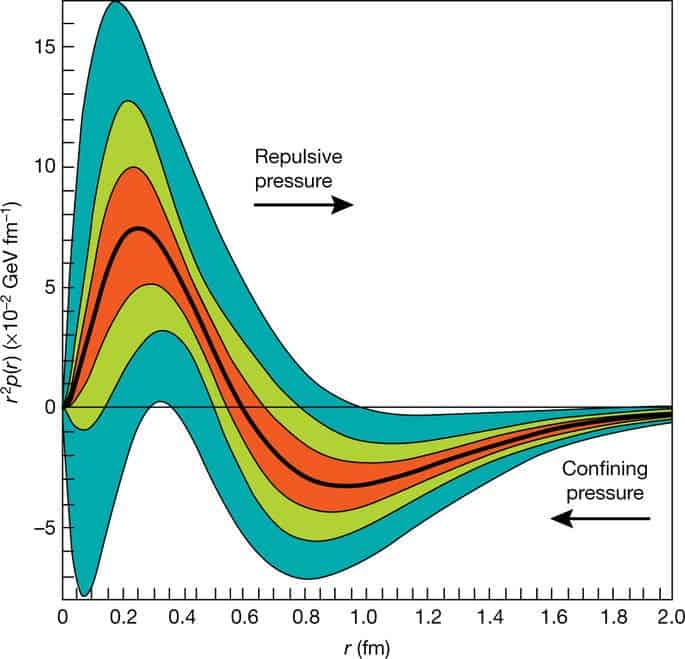An experiment once thought to be impossible reveals that the protons have incredibly pressurized cores.

Image credits V. D. Burkert et al., (2018), Nature.
Protons are the positively-charged elemental blocks of matter — only, they, in turn, consist of three smaller particles called quarks. Each is made up of two ‘up’ quarks and one ‘down’ quark bound by the strong nuclear force. However, beyond that, we simply don’t know much about the internal going-ons of protons. Given how hard it is to split one, it’s obvious that the three quarks are held tightly together.
But they’re bound together so strongly that, in the absence of something to push back, they would just collapse into a single point. To get to the bottom of things, one team of researchers reconciled two theoretical frameworks (one of which was actually considered impossible to implement directly) and then shot an electron through the proton. But the results were worth all the hassle.
“We have the medical 3D imaging technology that now allows the doctors to learn more in a non-invasive manner the structure of the heart,” study co-author Latifa Elouadrhiri from the Thomas Jefferson National Accelerator Facility told Nature. “And this is what we want to do with the new generation of experiments.”
Back in 1966, American physicist Heinz Pagels showed that the energy and momentum of a proton’s internal components can be gleaned from so-called gravitational form factors. However, Pagels himself pointed out that, because the gravitational forces involved would be ludicrously tiny, his findings wouldn’t actually ever be used in practice.
Since then, however, researchers have developed mathematical models that allow them to produce a 3D model of a proton’s structure by probing its electromagnetic force. These models are known as generalized parton distributions — or GDPs. It was these GDPs that the team used in lieu of the gravitational probe to turn Pagels’ work into something with practical applications.
“This is the beauty of it. You have this map that you think you will never get,” says Elouadrhiri. “But here we are, filling it in with this electromagnetic probe.”
The team used the Compton scattering effect, which describes the interaction between photons and a charged particle (such as an electron) to finally peer into the proton. The team accelerated an electron to massive speeds, in a bid to narrow its wavelength — then shot it at a proton. Then they analyzed the pattern of scattering for the photons produced int he collision to determine how the quarks fared in the impact.
According to the team, the scattering patterns suggest that the center of the proton is pressurized, preventing the particle from collapsing in on itself. An equal pressure from the outside keeps the quarks together. What was surprising, however, was just how immense these pressures were: 100 decillions (35 zeroes) Pascal. To put that into perspective, it’s ten times the pressure inside a neutron star.
Next up, the team plans to continue using this process to further explore the proton’s internal structure and mechanics.
The paper “The pressure distribution inside the proton” has been published in the journal Nature.


